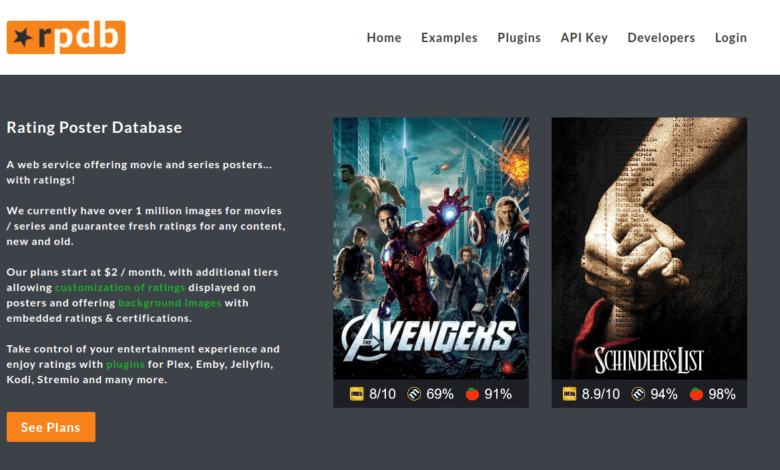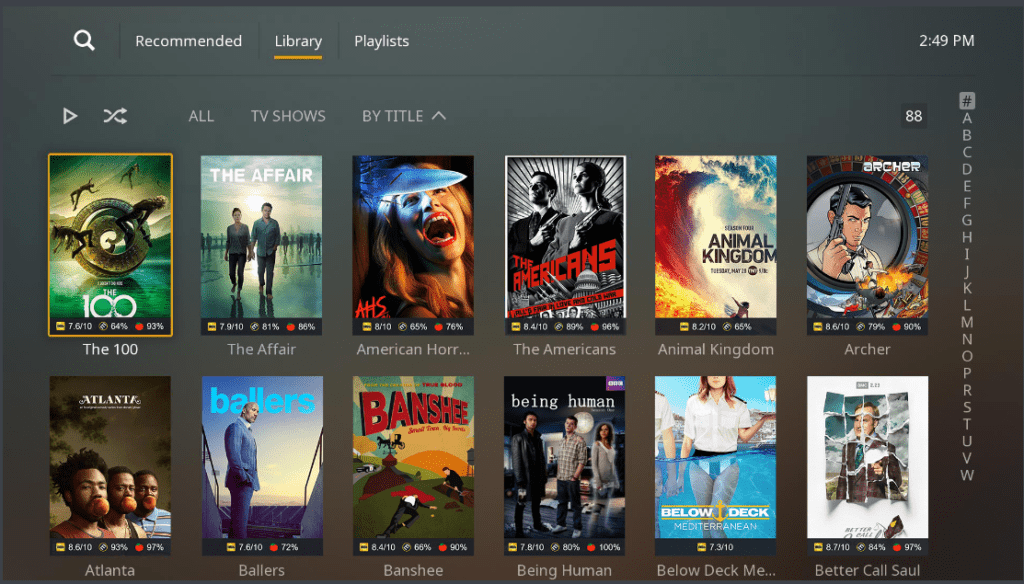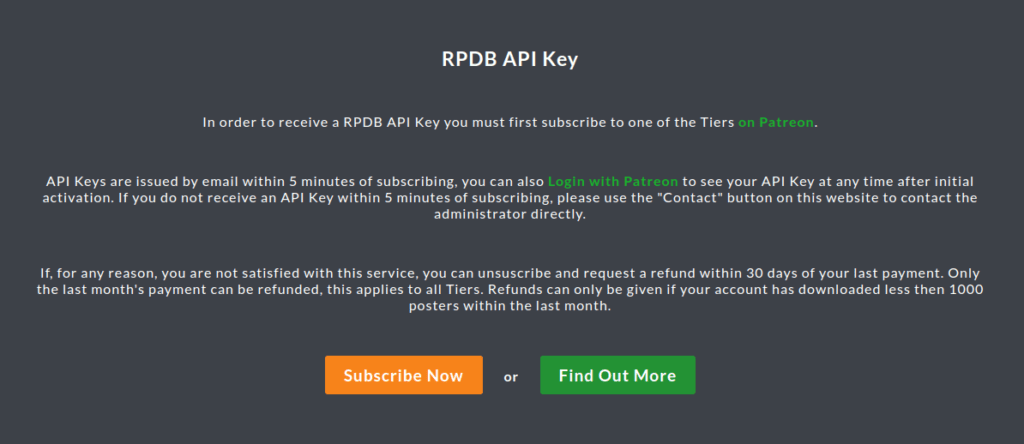Comprehensive Guide to RPDB API Keys, Features, Pricing

Introduction
Unlock the door to unprecedented data capabilities with the RPDB API Key. In today’s digital age, the ability to seamlessly integrate and manipulate data can set your business apart. Imagine having a tool that grants you unrestricted access to vast repositories of information, all at your fingertips. Whether you’re a developer seeking to streamline processes or a business aiming to enhance your data strategy, the RPDB API Key offers unparalleled potential. Dive into a world where data flows effortlessly, security is uncompromised, and performance is optimized for excellence. Envision the transformative power of harnessing this API to elevate your projects and drive innovation. The journey to superior data management begins here—are you ready to take the first step?

What is the RPDB API?
The RPDB API is a powerful interface designed to facilitate seamless data integration and manipulation. It provides developers with access to a robust database, enabling them to perform a wide range of operations, from simple data retrieval to complex data transformations. At its core, the RPDB API allows for efficient communication between different software applications, ensuring data consistency and reliability.
With the RPDB API Key, users can authenticate their requests, ensuring secure and controlled access to the database. This key is essential for interacting with the API, as it grants permissions and tracks usage. The RPDB API supports various data formats and protocols, making it versatile for numerous applications, including data analytics, reporting, and application development. By leveraging the RPDB API Key, developers can unlock new possibilities in data management and application integration.
Table of Contents
RPDB API Key Features
The RPDB API boasts a plethora of features designed to meet the diverse needs of developers:
- Versatile Data Access: Retrieve, update, and delete data across multiple tables with ease.
- Robust Security: Utilizes advanced encryption techniques to ensure data integrity and confidentiality.
- High Performance: Optimized for low latency and high throughput, supporting high-frequency requests.
- Comprehensive Documentation: Detailed guides and references to assist developers in quickly understanding and utilizing the API.
- Scalability: Designed to handle increasing loads without compromising performance, making it suitable for both small-scale and enterprise applications.
How to Get RPDB API Keys
Acquiring an RPDB API key is a straightforward process:
- Sign Up: Visit the RPDB API website and create an account.
- Request a Key: Navigate to the API section of your dashboard and request an API key.
- Verify: Complete the verification process, which may involve email confirmation or providing additional information.
Once verified, you will receive your unique API key, which grants you access to the API’s endpoints.
RPDB API Pricing & Request Limits
The RPDB API offers a tiered pricing model designed to cater to different usage needs:
- Free Tier: The Free Tier is ideal for beginners or small projects, offering a limited number of requests per month without any financial investment. This tier allows users to explore the API’s capabilities and integrate basic functionalities. For more extensive use, the Standard Tier is available at $50 per month. It provides a more substantial request limit, making it suitable for moderate to high-traffic applications that require consistent data access and manipulation.
- Standard Tier: For large-scale enterprises, the Enterprise Tier is the pinnacle of service. Starting at $500 per month, this tier includes customizable request limits and premium support, ensuring that extensive and demanding operations run smoothly. This level is perfect for organizations that need high-volume data transactions and advanced features.
- Enterprise Tier: ach tier is designed to maximize the utility of your RPDB API Key, providing secure and efficient access to the database. By aligning the pricing model with your project’s needs, the RPDB API ensures cost-effectiveness while delivering robust performance and scalability.
RPDB API Pricing
Tier 1: $2 / month
- Posters with ratings
- Textless Posters (where available)
- 50,000 requests per month
Tier 2: $4 / month
- Everything from tier 1
- Customisable ratings for posters (4 options, + audience score)
- Choose the Poster (different poster choices)
- 100,000 requests per month
Tier 3: $7 / month
- Everything from previous tiers
- Choose from 11 rating options and their order!
- Backgrounds with ratings
- Custom Poster based on Image URL
- Custom Labels on Posters (set at the top of the poster)
- 150,000 requests per month
Tier 4: $30 / month
- Everything from previous tiers
- 750,000 requests per month
Lifetime Tier 2: $104 / month
- Everything from Tier 2
- One-Time Payment
Lifetime Tier 3: $182 / month
- Everything from Tier 3
- One-Time Payment
Each tier comes with specific request limits, ensuring that you only pay for what you use please visit this site: RPDB API pricing.
Use Cases for RPDB API
The versatility of the RPDB API makes it applicable across various scenarios:
- Data Synchronization: Keeping multiple databases in sync across different platforms.
- Automated Reporting: Generating reports from data aggregated from multiple sources.
- E-commerce Integration: Managing product information and inventory across various sales channels.
- Customer Relationship Management (CRM): Enhancing CRM systems by integrating external data sources for a comprehensive customer view.
How to Get Started with RPDB API?
Embarking on your journey with the RPDB API involves a few fundamental steps:
Step 1: Sign up and Obtain an API Key

Begin your RPDB API journey by visiting the official site at rpdb.io. Create an account and navigate to your dashboard to request your RPDB API Key. This unique key is essential for accessing and utilizing the API’s extensive data capabilities. Verify your email and provide the required information to complete the process. Once verified, your RPDB API Key will be issued, enabling secure and authenticated interactions with the API. This key is your entry point to leveraging the powerful features and functionalities that the RPDB API offers ,visit the RPDB API documentation page
Step 2: Understand the Endpoints
To effectively utilize the RPDB API, it’s crucial to grasp the concept of endpoints. Endpoints serve as gateways that define specific functionalities within the API ecosystem. Each endpoint corresponds to a distinct task or operation, such as retrieving data from a database table or updating existing records. By consulting the comprehensive API documentation, developers can familiarize themselves with the RPDB API Key-enabled endpoints, understanding their parameters and expected outcomes. This knowledge empowers users to orchestrate seamless interactions between applications and the RPDB database, ensuring data integrity and security throughout various data manipulation processes. Understanding endpoints is pivotal in harnessing the full potential of the RPDB API for diverse development projects.
Step 3: Make Your First API Call
Making your inaugural API call with the RPDB is an exciting step towards leveraging its capabilities. Using your RPDB API key, initiate the call to access data or execute commands within the system. Begin by crafting your request, specifying endpoints and parameters as outlined in the API documentation. The API key ensures secure authentication and authorization, enabling seamless interaction between your application and the RPDB database. Execute the call and interpret the response to validate data integration or perform necessary actions. This initial interaction sets the stage for harnessing the full potential of the RPDB API in your development projects.
Using API development tools like Apidog or or CURL, you can test your API key and make your first API call from use the command :
curl -X GET "https://api.rpdb.io/anime-ratings?title=Naruto" -H "Authorization: Bearer YOUR_API_KEY"
Utilize Apidog to Improve API Development Efficiency
Apidog stands out as a pivotal tool for advancing API development efficiency, offering a suite of sophisticated features designed to streamline the development lifecycle:
- Mocking Capabilities: Apidog facilitates early-stage testing by simulating API responses, allowing developers to validate API interactions without invoking the actual RPDB API key.
- Request Throttling: It includes request throttling mechanisms, enabling developers to simulate different traffic scenarios and optimize API performance under varying loads.
- Documentation Generation: Apidog automatically generates comprehensive API documentation, detailing endpoints and payloads, which enhances developer understanding and accelerates integration.
- Collaboration Tools: Its collaborative features promote team synergy by allowing developers to share API specifications and collaborate on projects seamlessly.
- Performance Analytics: Apidog provides detailed analytics on API usage, response times, and error rates, empowering developers to identify bottlenecks and optimize code.
Best Practices for RPDB API Implementation
To maximize the benefits of the RPDB API, consider the following best practices:
- Secure Your API Key: Treat your API key like a password. Never expose it in client-side code or public repositories.
- Optimize Requests: Minimize the number of requests by consolidating data retrieval operations. Utilize filtering and pagination features to handle large datasets efficiently.
- Monitor Usage: Regularly monitor your API usage to stay within your request limits and avoid unexpected costs.
- Stay Updated: Keep an eye on the API documentation and update logs for any changes or new features that could benefit your application.
Conclusion
In conclusion, integrating the RPDB API key into your development toolkit unlocks a realm of possibilities for data management and application integration. By leveraging its robust features and secure authentication mechanisms, developers can streamline data operations, enhance application functionality, and drive innovation within their projects. The RPDB API‘s tiered pricing model ensures scalability and cost-effectiveness, catering to a wide range of user needs from individual developers to large enterprises.
Understanding the intricacies of API endpoints and utilizing tools like Apidog can further optimize API development workflows, improving efficiency and reducing time-to-market. As technology continues to evolve, the RPDB API remains a pivotal tool for accessing and manipulating data with agility and precision, empowering businesses to stay competitive in today’s digital landscape. Embrace the future of data integration with the RPDB API key, and embark on a journey towards enhanced productivity and innovation.
FAQs
What is an rpdb API key?
- An rpdb API key is a unique identifier used to authenticate and authorize access to rpdb’s API services.
How do I obtain an rpdb API key?
- You can obtain an rpdb API key by registering for an account on the rpdb platform and following the instructions provided in the developer documentation.
Why do I need an rpdb API key?
- An rpdb API key is necessary to access rpdb’s API services securely. It helps control access and monitor usage of the API.
Is the rpdb API key sensitive information?
- Yes, the rpdb API key is sensitive information. It should be kept confidential and not shared publicly or hardcoded into your application’s source code.
How do I secure my rpdb API key?
- To secure your rpdb API key, store it in a secure environment such as environment variables or a secure secrets management service. Avoid exposing it in public repositories or client-side code.
What permissions can be associated with an rpdb API key?
- rpdb API keys can be configured with different permissions or scopes to control access to specific API endpoints or functionalities.
How can I regenerate my rpdb API key?
- You can regenerate your rpdb API key by logging into your rpdb account and following the instructions to generate a new key. Remember to update your applications with the new key to ensure uninterrupted service.
Can I use the rpdb API key across multiple applications?
- Yes, rpdb API keys can generally be used across multiple applications unless specified otherwise in the API provider’s terms of service.
What should I do if I suspect my rpdb API key has been compromised?
- If you suspect your rpdb API key has been compromised, regenerate it immediately from your rpdb account dashboard and update it in all relevant applications. Monitor for any unauthorized usage.
Does rpdb offer rate limiting or usage quotas for API keys?
- Yes, rpdb may offer rate limiting or usage quotas to control the usage of API keys and prevent abuse or excessive usage.


One Comment